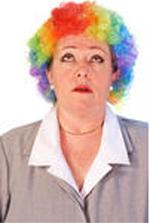Hair diseases and hair treating
|
|
Hair loss typesGeneral debility, caused by severe or long standing illnesses like typhoid, syphilis, chronic cold, influenza and anaemia, also gives rise to hair disorders. It makes the roots of the hair weak, resulting in falling of hair. An unclean condition of the scalp can also cause loss of hair. This weakens the hair roots by blocking the pores with the collected dirt. Heredity is another predisposing factor which may cause hair to fall. Women require 60 grams, men 80 to 90 grams, adolescent boys and girls 80 to 100 grams of protein. It is supplied by milk, buttermilk, yogurt, soyabean, eggs, cheese, meat and fish. A deficiency of some of the B vitamins, of iron, copper and iodine may cause hair disorders like falling of hair and premature greying of hair. There are many surgical procedures which will help to restore the hair from falling. Surgical restoration is the only permanent solution to baldness. It involves a series of operations that extract plugs of scalp from the sides and back of your head, where hair grows densely, and implant them on top and in front, where you are going bald. Scalp reduction is performed on patients with well-defined bald spots in the crown area of the scalp. It is sometimes done in conjunction with hair transplantaion to reduce the size of the bald scalp, especially in patients who do not have enough donor hair to cover the bald areas. Silicon bags are inserted beneath an area of hairy scalp and gradually inflated with saline water over a six-week period. This causes the hair-bearing skin to stretch, thus increasing the amount of hair-bearing scalp. After removing the bags, expanded hair bearing skin is lifted and moved to an adjacent bald area where a similar sized patch of scalp has been excised. For men, hair loss is male pattern baldness. Yes, there are other types of hair loss, including rare conditions such as alopecia totalis and alopecia universalis, where the entire scalp and entire body, respectively, become completely bald due to a viral condition that is irreversible. There is also patch baldness, in which hair falls out in patches of the scalp. This is caused by stress or poor nutrition or adverse scalp conditions. But the hair will usually grow back once the cause has been rectified. For women, hair loss is different. There is no set pattern for womens androgenic hair loss, which like MPB, occurs in the overwhelming majority of cases. Women can suffer from alopecia totalis and alopecia universalis just like men. Women can experience patch baldness for the same reasons as men (stress, poor nutrition, etc.), as well as due to hormonal changes from pregnancy and certain eating disorders. However, like men, the hair will generally grow back. The chief difference in womens androgenic hair loss from mens (both are hormone related) is that women tend to experience thinning that occurs in no particular pattern or part of the scalp. Unlike men, the scalp may not actually be totally denuded of hair, just thin to the point where the scalp is visible. Like men, however, the resulting hair loss is generally irreversible. The effectiveness of medications used to treat alopecia depends on the cause of hair loss, extent of the loss and individual response. Generally, treatment is less effective for more extensive cases of hair loss. New hair resulting from minoxidil use may be thinner and shorter than previous hair. But there can be enough regrowth for some people to hide their bald spots and have it blend with existing hair. New hair stops growing soon after you discontinue the use of minoxidil. If you experience minimal results within six months, your doctor may recommend discontinuing use. Side effects can include irritation of the scalp. Finasteride (Propecia). This prescription medication to treat male-pattern baldness is taken daily in pill form. Many people taking finasteride experience a slowing of hair loss, and some may show some new hair growth. Positive results may take several months. Finasteride works by inhibiting the conversion of testosterone into dihydrotestosterone (DHT), a hormone that shrinks hair follicles and is an important factor in male hair loss. Rare side effects of finasteride include diminished sex drive and sexual function. As with minoxidil, the benefits of finasteride stop if you stop using it. Hair loss patternsDo you feel that you are the only one losing hair? You're not! The most common form of hair loss, Androgentic Alopecia, or pattern baldness, is experiences by 50-80% of Caucasian men. The number of Chinese males affected are half of the Caucasian counterparts while African Americans have a lower incidence of the condition as well. For women androgenetic alopecia occurs between 20-40% of the general female population. In summary, it is safe to say that pattern baldness is experienced by the norm of the population, you're not alone, but actually in the majority. Alopecia Areata Childbirth - When a women is pregnant, more of her hairs will be growing. However, after a woman delivers her baby, many hairs enter the resting phase of the hair cycle. Within two to three months, some women will notice large amounts of hair coming out in their brushes and combs. This can last one to six months, but resolves completely in most cases. High Fever, Severe Infection, Severe Flu - Illnesses may cause hairs to enter the resting phase. Four weeks to three months after a high fever, severe illness or infection, a person may be shocked to see a lot of hair falling out. This shedding usually corrects itself. Medications - Some prescription drugs may cause temporary hair shedding. Examples include some of the medicines used for the following: gout, arthritis, depression, heart problems, high blood pressure, or blood thinner. High doses of vitamin A may also cause hair shedding. Cancer Treatments - Some cancer treatments will cause hair cells to stop dividing. Hairs become thin and break off as they exit the scalp. This occurs one to three weeks after the treatment. Patients can lose up to 90 percent of their scalp hair. The hair will regrow after treatment ends. Patients may want to get wigs before treatment. Major Surgery/Chronic Illness - Anyone who has a major operation may notice increased hair shedding within one to three months afterwards. The condition reverses itself within a few months but people who have a severe chronic illness may shed hair indefinitely. Hair Pulling (Trichotillomania) - Children and sometimes adults will twist or pull their hair, brows or lashes until they come out. In children especially, this is often just a bad habit that gets better when the harmful effects of that habit are explained. Sometimes hair pulling can be a coping response to unpleasant stresses and occasionally is a sign of a serious problem needing the help of a mental health professional. Physical and emotional stress might cause hair loss since body is recuperating from an overwhelming turmoil and simply shuts down hair production, thinking that it is not necessary for the body's survival, thereby contributing all energy toward repairing vital body parts. there can be up to three months delay between the major incidence and the actual hair loss. Moreover, there is also period of three months before the loss hair is replaced. This then means there is a total of a minimal of 6 moths for the total hair loss and regrowth cycle. Of course there are things that might contribute to hair loss such as anemia, low blood count, and thyroid abnormalities. The hair tips and advisesMany people (wrongly) will drop a handful of shampoo on their head and then rinse it off. Shampoo must be worked through all of your hair, as well as the scalp and hairline. Correct use of conditioners containing light proteins, such as hydrolyzed human hair keratin proteins, can help strengthen your hair. A good conditioner with these proteins can easily penetrate the hair shaft to replenish nutrients. These proteins can also repair split ends. Split ends develop after the protective cuticle has been stripped away from the end of hair fibers as a result of harsh chemicals or even vigorous brushing. Hair requires the same overall nutrition that the body does: plenty of fresh fruits and vegetables, grains and protein including lean meat and fish. Dietitians recommend foods high in biotin, including brown rice, bulgar, brewer's yeast, soybeans, green peas, lentils, oats, sunflower, seeds and nutritious nuts.
Terms and definitionsScalp Quality czech plastic surgery
|

